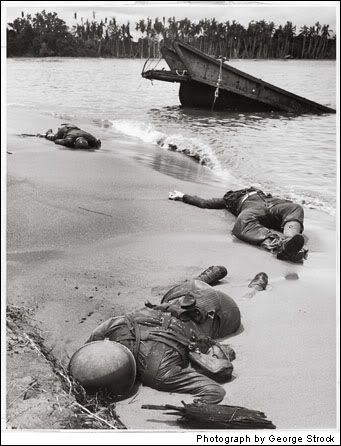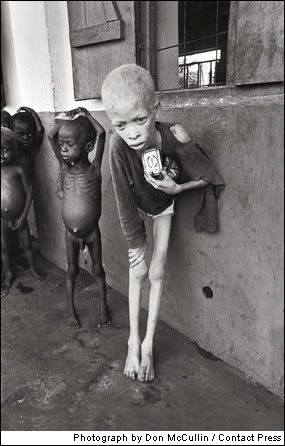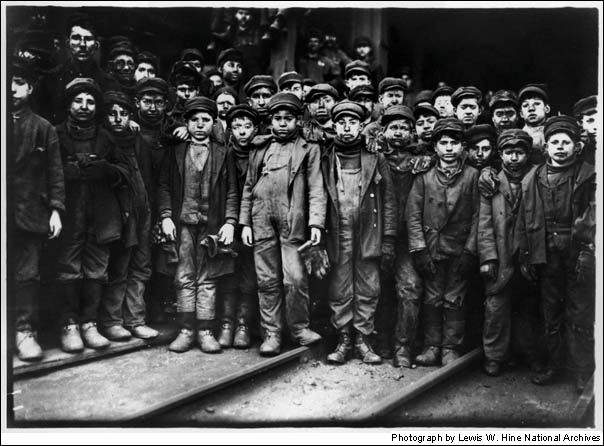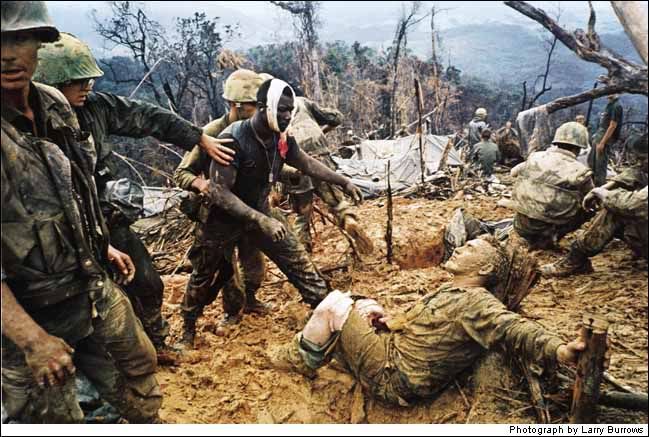
Dead on the Beach 1943
When LIFE ran this stark, haunting photograph of a beach in Papua New Guinea on September 20, 1943, the magazine felt compelled to ask in an adjacent full-page editorial, “Why print this picture, anyway, of three American boys dead upon an alien shore?” Among the reasons: “words are never enough . . . words do not exist to make us see, or know, or feel what it is like, what actually happens.” But there was more to it than that; LIFE was actually publishing in concert with government wishes. President Franklin D. Roosevelt was convinced that Americans had grown too complacent about the war, so he lifted the ban on images depicting U.S. casualties. Strock’s picture and others that followed in LIFE and elsewhere had the desired effect. The public, shocked by combat’s grim realities, was instilled with yet greater resolve to win the war.

Biafra 1969
When the Igbos of eastern Nigeria declared themselves independent in 1967, Nigeria blockaded their fledgling country-Biafra. In three years of war, more than one million people died, mainly of hunger. In famine, children who lack protein often get the disease kwashiorkor, which causes their muscles to waste away and their bellies to protrude. War photographer Don McCullin drew attention to the tragedy. "I was devastated by the sight of 900 children living in one camp in utter squalor at the point of death," he said. "I lost all interest in photographing soldiers in action." The world community intervened to help Biafra, and learned key lessons about dealing with massive hunger exacerbated by war-a problem that still defies simple solutions.

Breaker Boys1910
What Charles Dickens did with words for the underage toilers of London, Lewis Hine did with photographs for the youthful laborers in the United States. In 1908 the National Child Labor Committee was already campaigning to put the nation’s two million young workers back in school when the group hired Hine. The Wisconsin native traveled to half the states, capturing images of children working in mines, mills and on the streets. Here he has photographed “breaker boys,” whose job was to separate coal from slate, in South Pittston, Pa. Once again, pictures swayed the public in a way cold statistics had not, and the country enacted laws banning child labor.

South of the DMZ 1966
Contrary to the constraints that were put upon the press in subsequent conflicts, and even to the embedded program used in the recent Iraqi war, correspondents and photographers in Vietnam could, as Walter Cronkite wrote in LIFE, “accompany troops to wherever they could hitch a ride, and there was no censorship . . . That system—or lack of one—kept the American public well informed of our soldiers’ problems, their setbacks and their heroism.” Reaching Out is a quintessential example of the powerful imagery that came out of Vietnam. “The color photographs of tormented Vietnamese villagers and wounded American conscripts that Larry Burrows took and LIFE published, starting in 1962, certainly fortified the outcry against the American presence in Vietnam,” Susan Sontag wrote in her essay “Looking at War,” in the December 9, 2002, New Yorker. “Burrows was the first important photographer to do a whole war in color—another gain in verisimilitude and shock.” Burrows was killed when the helicopter he was riding in was shot down over Laos in 1971.

Tidak ada komentar:
Posting Komentar